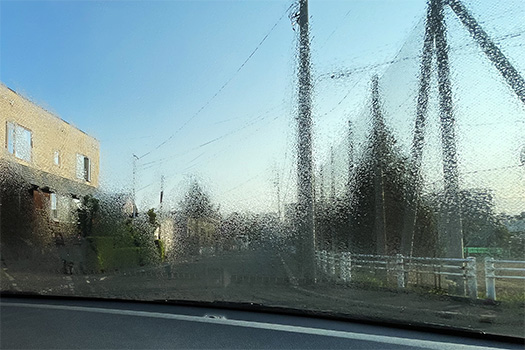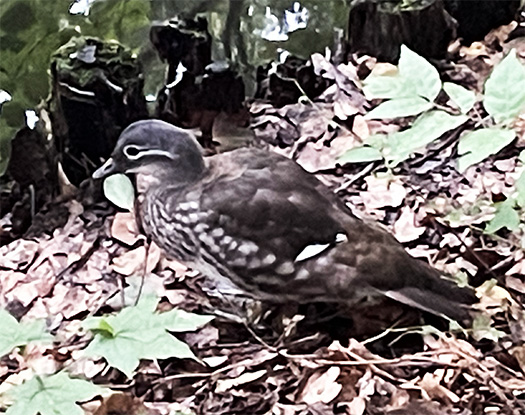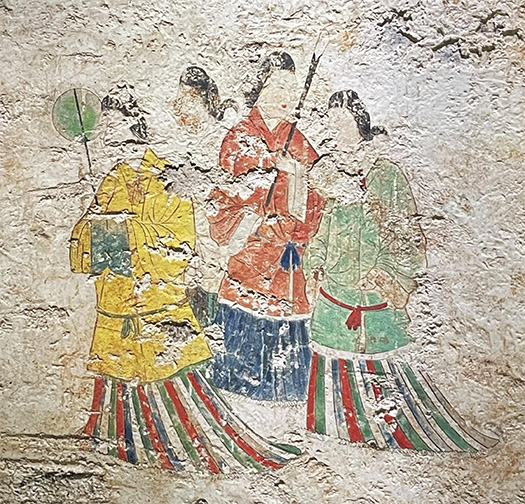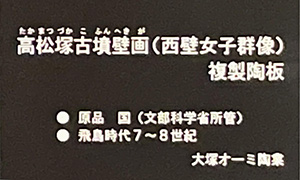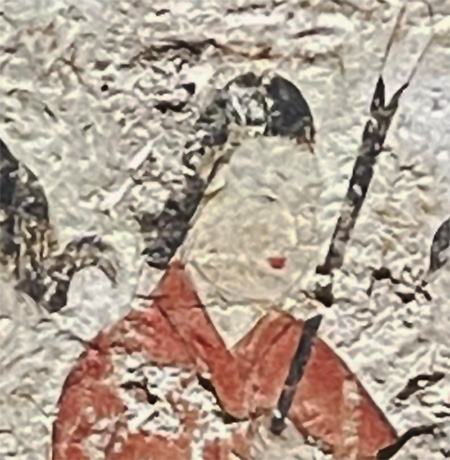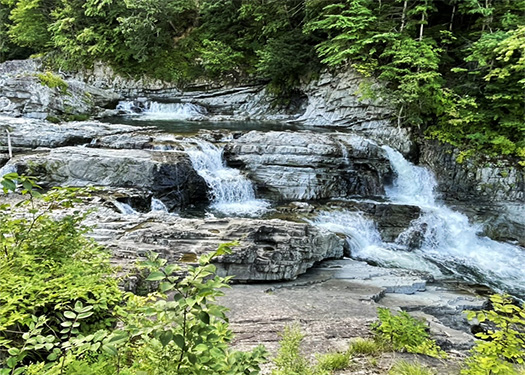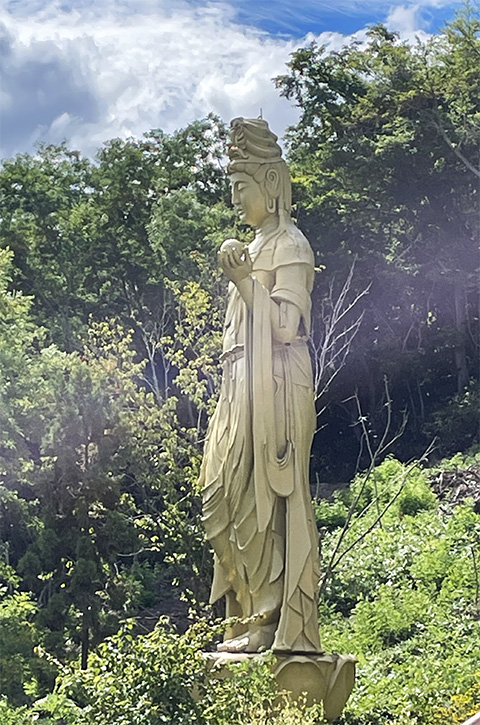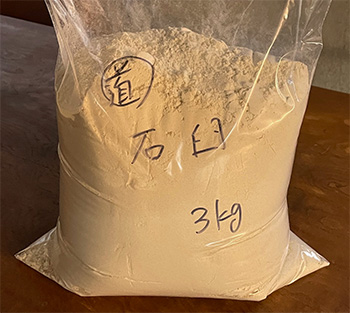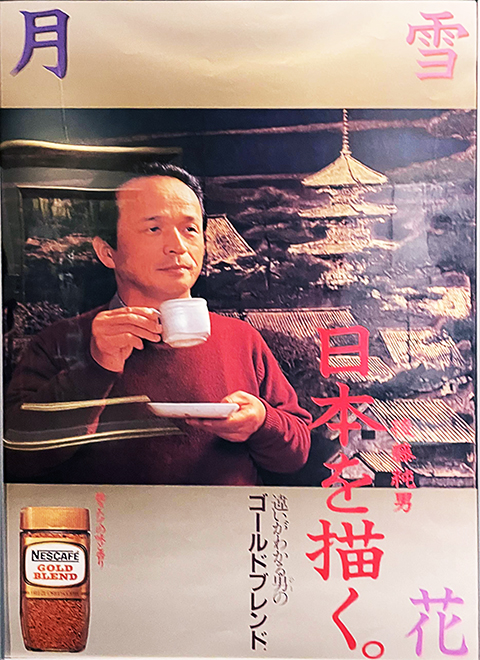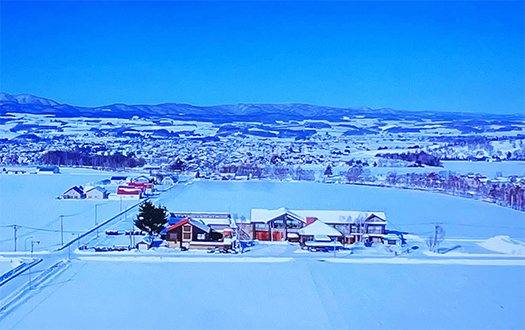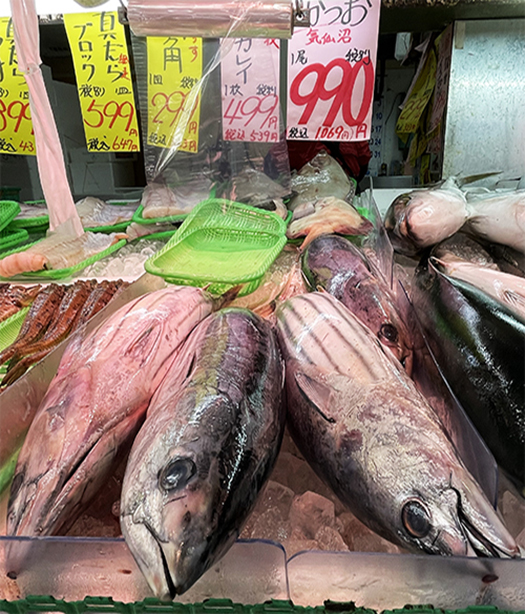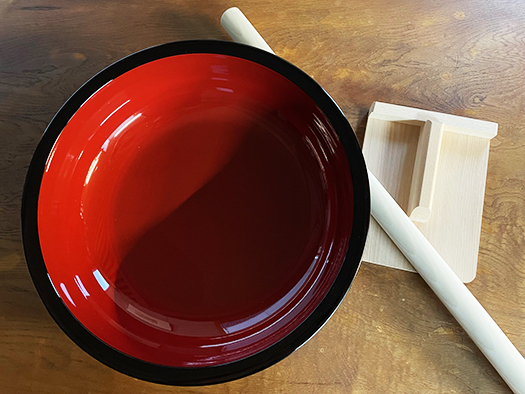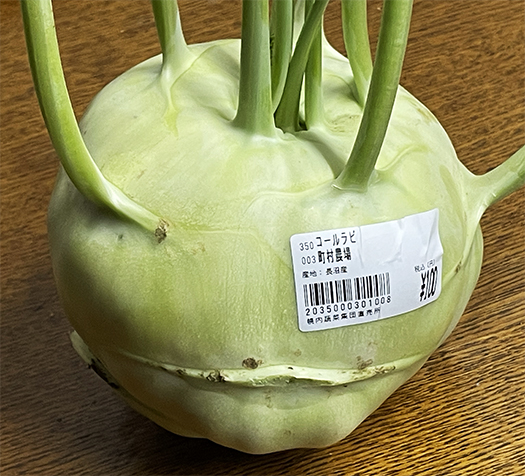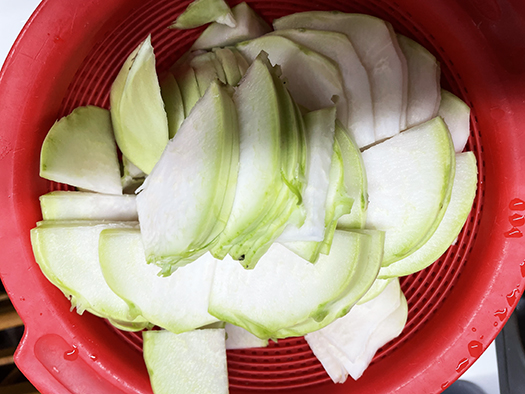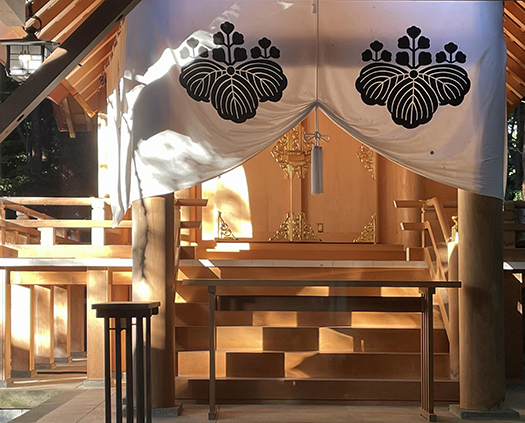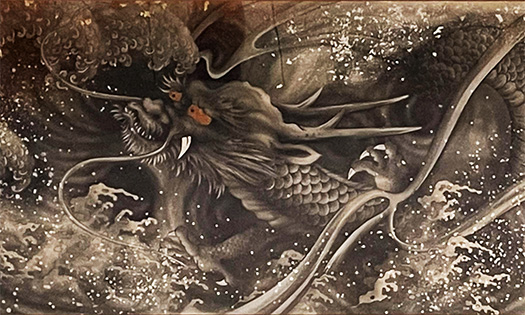
きのうは一昨日から掛かりきりの「難航」案件に引き続き対処。状況が見通せないプロセスが続きます。国家行政組織との対応案件。さまざまな制度上の推移経験の結果、現状の機構構造があるのでしょうが、省庁間の縦割りの実態をもいろいろ実感させられる次第。
一方で民間企業との対応案件では「大きな会社」の最終的社長決裁が降りた、という知らせ。おお、であります。やっぱりなにごとも決して諦めず、淡々と向かい続けるしかないことを、ありがたく知らされた。ご助力いただいたみなさん、すべてに感謝であります。
というようなビジネスでの日常があるのですが、すべてが終わらなければ途中経過段階では発表は出来ない、いや結局は「終わらない」ので、日々のブログテーマにはムリ。
ということでテーマ避難。写真はことし奈良の興福寺に行って円安+コロナ明けの異常な海外旅客集中・大混雑ぶりにいたたまれず、飛鳥地方に避難行に向かったとき、最初に発見して参詣した閑静な神社「大和神社」。そちらの拝殿に掲額されていた飛龍の絵の一部であります。
神社などではこういう「やまと絵」が基本的に採用される。伝統的な絵画技法で、こういう技法が現代の後藤純男さんの絵のような日本画のベースになっているのでしょう。添え書きなどはなかでは見られなかったので、いわば名もなき額絵。
こういう額絵の「寄進」の社会習慣というのは、日本社会では相当古くからあったのでしょう。地域が農業開発されて人口規模が拡大していくのが日本の普遍的社会形成でしょうが、基本的に「八百万」という地神は各地に伝承されて、神社に祀られ、そうした地神への奉納として地域での成功者たちが感謝の意味を込めて贈ったモノでしょう。こういう「芸術者」たちには、そういう機会が貴重なビジネスチャンスであって、このような作品を残した。
西洋社会でのキリスト教の教会などに聖母マリアの絵を寄進するというようなことと同様なのでしょうが、そういった「定型化」が日本の場合にはこうした飛龍の絵なのでしょう。たぶん寄進した個人・家に対してその勢い・勢力を表現するのに、躍動感たっぷりのこうした飛龍が画題として、一般的に選択されたのでしょう。
そんなことを考えながらいつも参観させていただいています。現世での生々しい権力ゲームがいま繰り広げられていて、メディアも明白にその権力機構の一部である実態も赤裸々になっている。そういう光景に対して、俗世をやや離脱した歴史事物には、ふしぎと癒される空気感がありますね。日本の歴史にはそういう「濾過装置」が仕組まれているのでしょうか。
English version⬇
[The clear and bizarre reality of the media in relation to power struggles and the framed picture of a local shrine
The naked and bizarre reality of the media in relation to the struggle for power. Let’s take a look at the “Hiryu” (flying dragon) frames of Yamato-e paintings and try to heal our hearts. The “flying dragon” of the Yamato-e painting is a little comforting.
Yesterday, we continued to deal with the “difficult” case that we have been working on since the day before yesterday. The situation continues to be unpredictable. This is a case of dealing with a national administrative organization. The current structure of the organization is the result of the experience of various institutional transitions, but it also makes me realize the reality of the stove-piping between ministries and agencies.
On the other hand, in the case of dealing with the private sector, I received the news that the final decision of the president of a “big company” had been made. Oh, yes, that’s great. I am grateful to have been informed that we must never give up on anything and continue to face the situation without hesitation. I am grateful to everyone who helped me.
I have a daily business life like this, but I can’t make an announcement in the middle stage unless everything is finished, and in the end, it won’t be finished, so I can’t use it as a daily blog theme.
So, the theme was evacuated. The photo is of Yamato Shrine, a quiet shrine that I first discovered and visited when I went to Kofukuji Temple in Nara this year to take refuge in the Asuka area due to the unusually high concentration of foreign passengers and large crowds after the depreciation of the yen and the Corona. This is a part of a picture of a flying dragon displayed in the hall of worship there.
Yamato-e” is a traditional painting technique used at shrines. It is a traditional painting technique, and this kind of technique is probably the base of modern Japanese paintings such as Sumio Goto’s. The accompanying notes were not seen in the painting. Since there were no accompanying inscriptions, so to speak, this is a framed painting without a name.
The social custom of “donation” of framed pictures like this must have existed in Japanese society for quite some time. The “eight million” local deities were basically handed down from generation to generation and enshrined in shrines, and the successful people of the region gave them as an offering to these local deities as a token of their gratitude. For these “artists,” such an opportunity was a valuable business opportunity, and they left behind such works.
This is probably similar to the Western society of donating a painting of the Virgin Mary to a Christian church, but in the case of Japan, this type of painting of flying dragons is a “formulation” of such an occasion. Perhaps the lively flying dragons were generally chosen as subjects to express the vigor and power of the individual or family who donated the money.
I always visit the exhibition with this in mind. The raw power game in this world is now being played out, and the reality that the media is clearly a part of the power structure is also laid bare. In contrast to such scenes, historical events that are somewhat removed from the mundane world have an air of mystery and healing. Is there such a “filtering device” built into Japanese history?
Posted on 8月 23rd, 2024 by 三木 奎吾
Filed under: 日本社会・文化研究 | No Comments »


